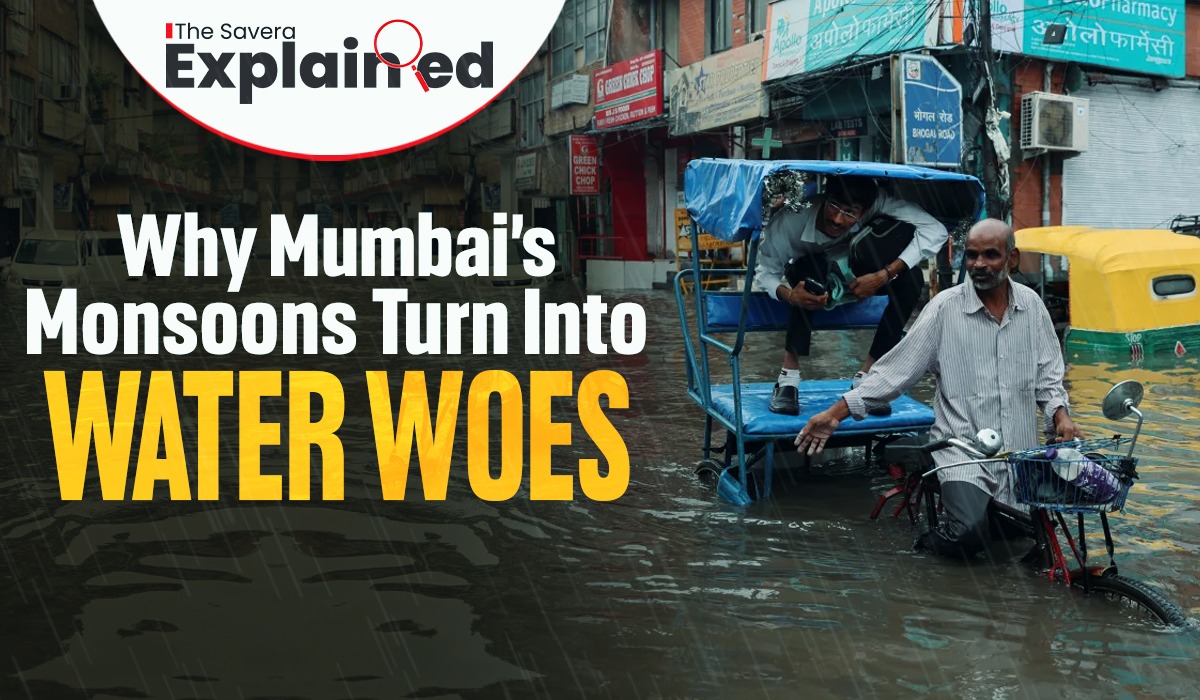
Mumbai: Once again images and videos of roads, railway tracks and even underground metro facing floods due to heavy rain in monsoon is getting viral all over social media again.
#WATCH | Maharashtra: Bhosari area of Pimpri-Chinchwad of Pune district waterlogged, following heavy rainfall here. pic.twitter.com/9wt5B5GmZn
— ANI (@ANI) June 13, 2025
But who is responsible for the monsoon mess?
Across many parts of India, the monsoon has transformed the landscape into a lush, vibrant haven, and people are reveling in the refreshing embrace of rain, enjoying the cool breezes and the rhythmic dance of droplets. Yet, in the heart of the nation’s financial hub, Mumbai, the picture is quite different. As the city’s streets turn into overflowing streams and traffic snarls become more chaotic, thousands of residents find themselves caught in the frustration of relentless flooding and waterlogged roads. While the monsoon smiles kindly elsewhere, Mumbai’s residents battle the storm’s chaos, navigating the streets with patience and hope that the rains will soon ease, bringing relief rather than inconvenience.
The Brihanmumbai Municipal Corporation (BMC) springs into action, installing de-watering pumps in flood-prone areas and manually clearing waste from drains to prevent waterlogging. Despite these efforts, many residents find that it’s too little, too late. Streets that should be free-flowing become flooded battlegrounds, and neighborhoods are submerged in frustration and helplessness. The city’s struggles highlight a harsh reality—despite years of warnings and attempts at mitigation, the impact of heavy rains continues to disrupt life in Mumbai.
This recurring crisis is not unique to Mumbai.
Across India, the story repeats itself each monsoon season, stretching from Delhi in the north to Bengaluru in the south. Roads collapse under the weight of water, drains overflow, and infrastructure buckles under the relentless pressure. Traffic snarls into chaos, halting movement and complicating daily routines for millions.
Each city faces its own battles with nature’s fury, exposing vulnerable urban systems that are overwhelmed every year.
Experts point to the root causes behind this persistent problem: rapid, unplanned urbanization, crumbling infrastructure, and decades of environmental neglect.
These issues have created a perfect storm, leaving cities ill-prepared for the deluge of monsoon rains. Without sustainable and strategic planning, the cycle of flooding, destruction, and frustration will continue, underscoring the urgent need for holistic urban development that can withstand nature’s seasonal tests. Ultimately, these floods are more than just weather events—they are a wake-up call for India’s cities to build resilience and adapt for the future.
Which Factors Lead to Chaos?
A combination of natural factors, outdated infrastructure, unplanned urban growth, and poor governance.
